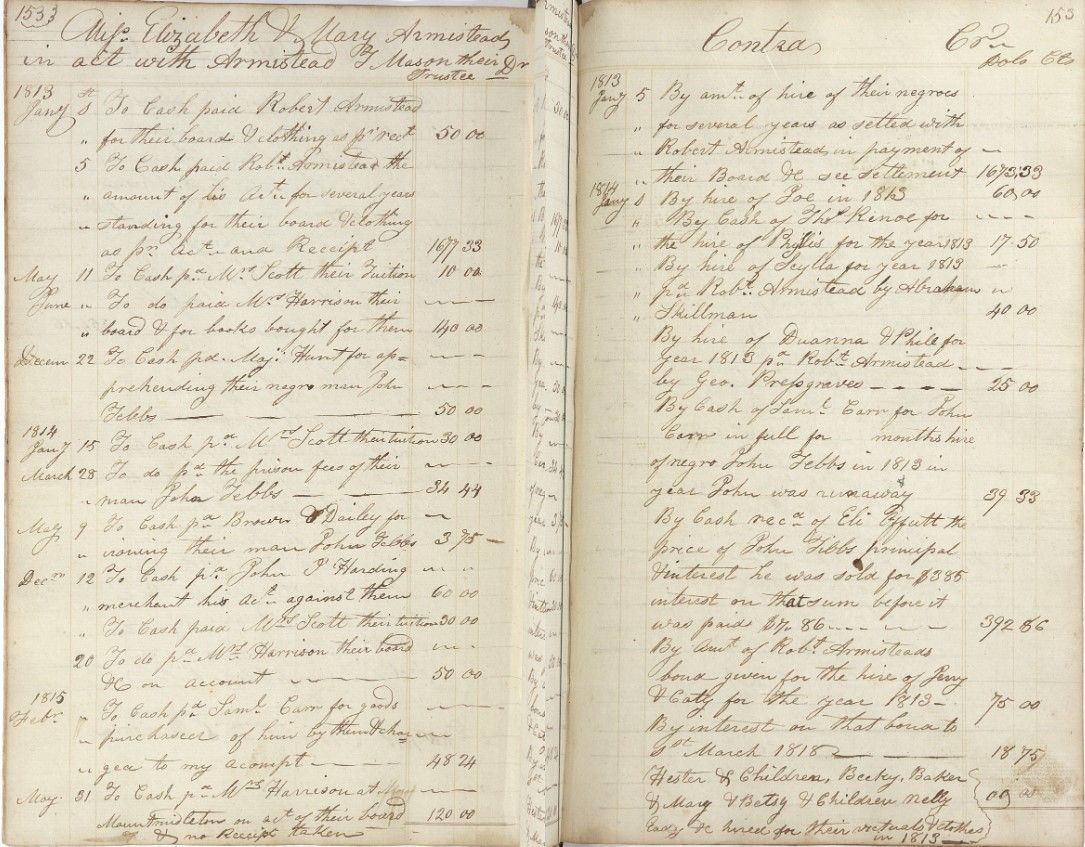Tebbs, John
Birth
Death
First Name
Last Name
Person Biography
John Tebbs was an enslaved African American man held in bondage by Armistead T. Mason on behalf of Elizabeth and Mary Armistead. Elizabeth Armistead, born in 1800, and her sister, Mary, born in 1802, were the daughters of Robert Armistead III and his first wife, Lucinda Margaret Ellzey. After his wife’s death in 1804, Robert Armistead gave the land and enslaved people that he acquired through his marriage to Armistead T. Mason “in trust for the use and benefit of my two Daughters, Elizabeth & Mary,” with the right to sell any of the enslaved people if necessary. The deed of trust, recorded in the Loudoun County Court on 15 October 1805, names ten enslaved people, including a “John.” This could be the John Tebbs featured in Mason’s account book. Lucinda probably inherited Tebbs from her father, William Ellzey. The surname Tebbs suggests a connection with the Tebbs family of white planters who owned land in Loudoun and Prince William Counties.
Tebbs probably labored in the wheat fields, like most enslaved men in Loudoun County. He most likely lived and worked at Armistead T. Mason’s plantation, Selma, just north of Leesburg and adjacent to Raspberry Plain, although Mason also hired out Tebbs’s labor to others, including John Carr. Armistead Mason used the money he earned from hiring the labor of Tebbs and the Armisteads’ other enslaved people to pay for the upkeep and education of Elizabeth and Mary.
In 1813, while hired out to John Carr, Tebbs attempted to escape from slavery by running away. By December 1813, Major Hunt, a local slave patroller, captured Tebbs, who was then held in jail. While imprisoned, Tebbs was likely shackled.
In February and March 1814, Armistead Mason ran an advertisement in the newspaper offering a “STOUT, strong young NEGRO MAN” for sale with the stipulation that “The purchaser will be required to remove him beyond the southern extremity of Virginia, or to transport him to the West Indies.” Perhaps this advertisement referred to Tebbs; Mason could have wished to sell him south as a punishment for running away. On 28 March 1814, the last day the ad appeared in the paper—and the same day Mason paid Tebbs’s prison fees—Mason recorded a bill of sale to Eli Offutt, a Fairfax County resident who ran a merchandise business in Leesburg, “to be Certified to the State of Kentucky.” This transaction could have been the purchase of Tebbs by Offutt, who then took or sent him to Kentucky. The Mason family manuscript account book confirms Armistead Mason’s sale of Tebbs to Eli Offutt in early 1814 for the sum of $385, plus $7.86 in interest. If he was taken to Kentucky, John Tebbs became one of the million enslaved men, women, and children who were forcibly transported from the Upper South into new areas of white settlement between 1788 and 1861.
By Tom Seabrook

